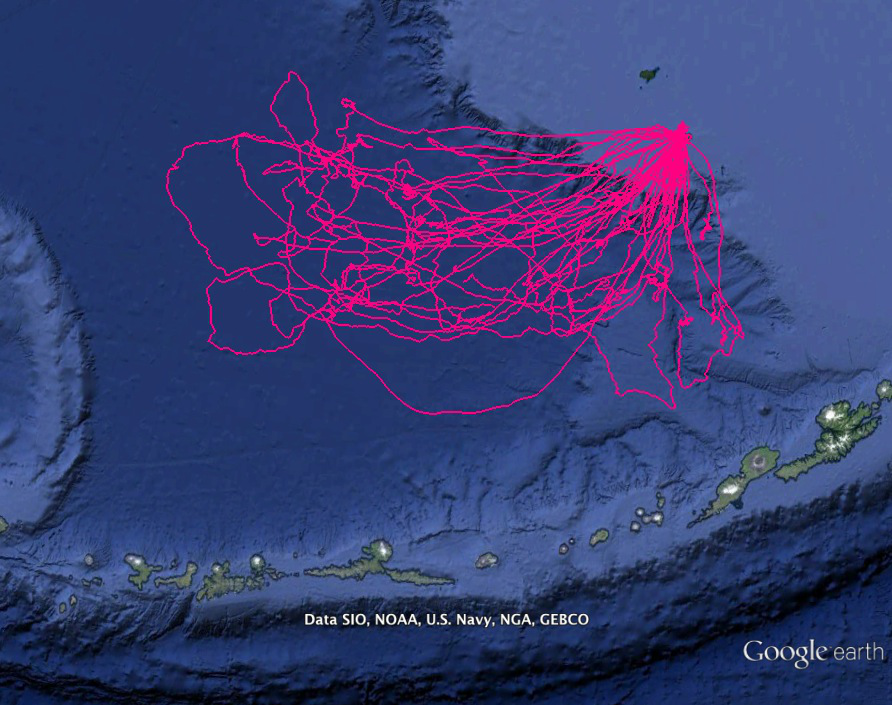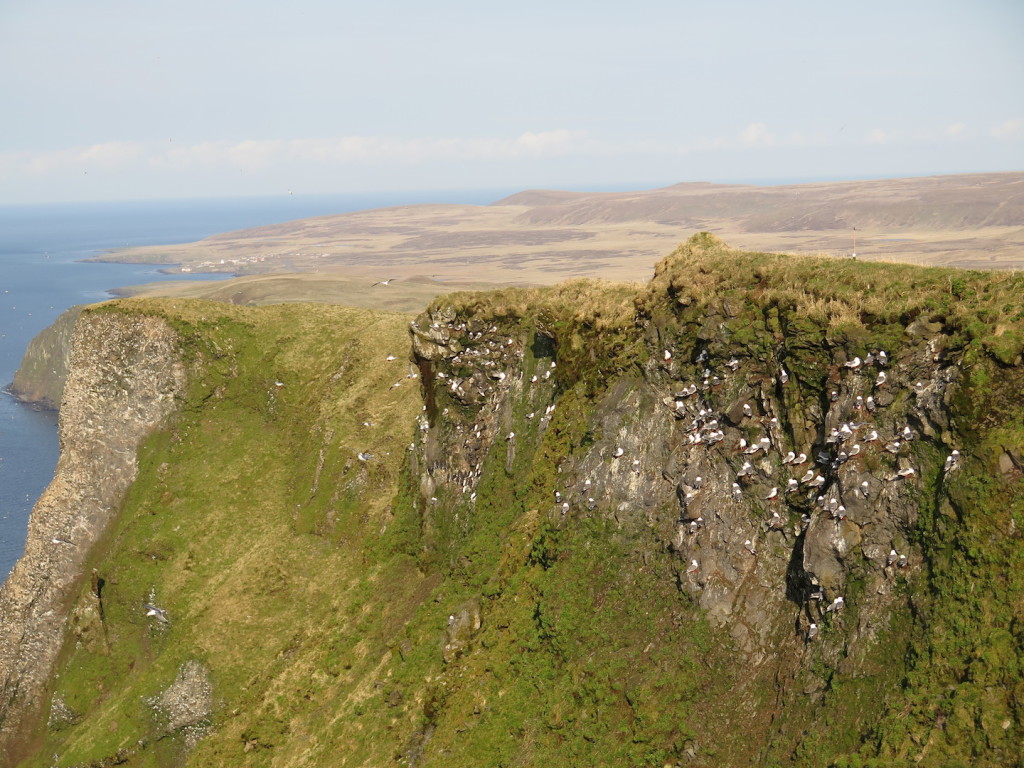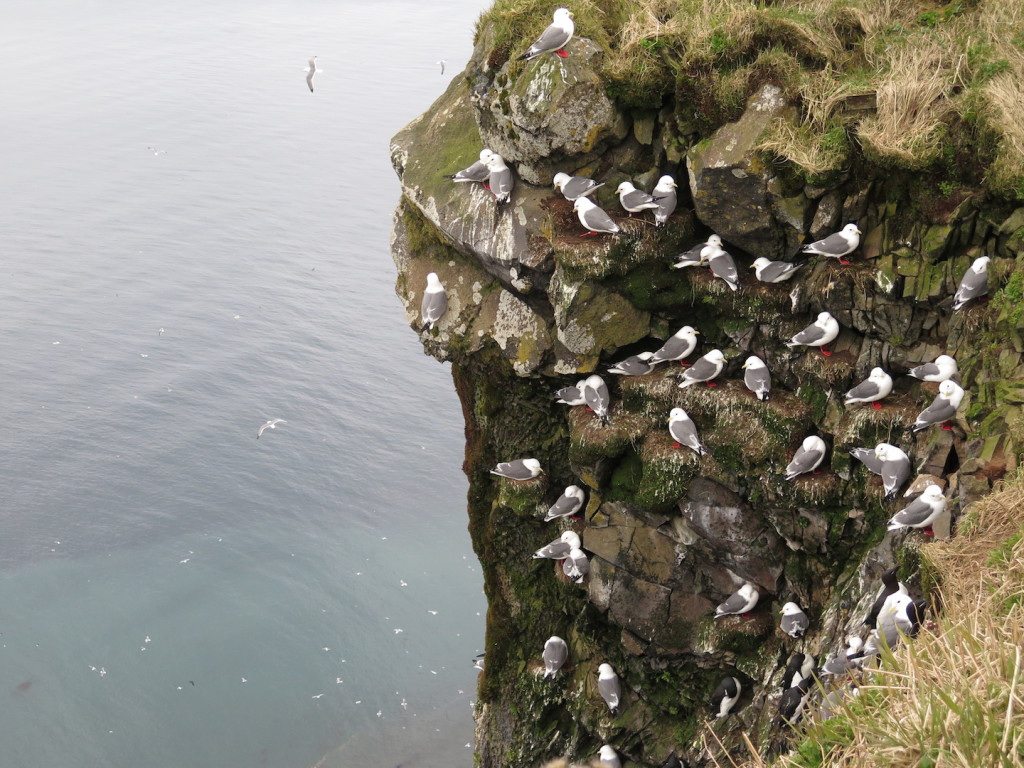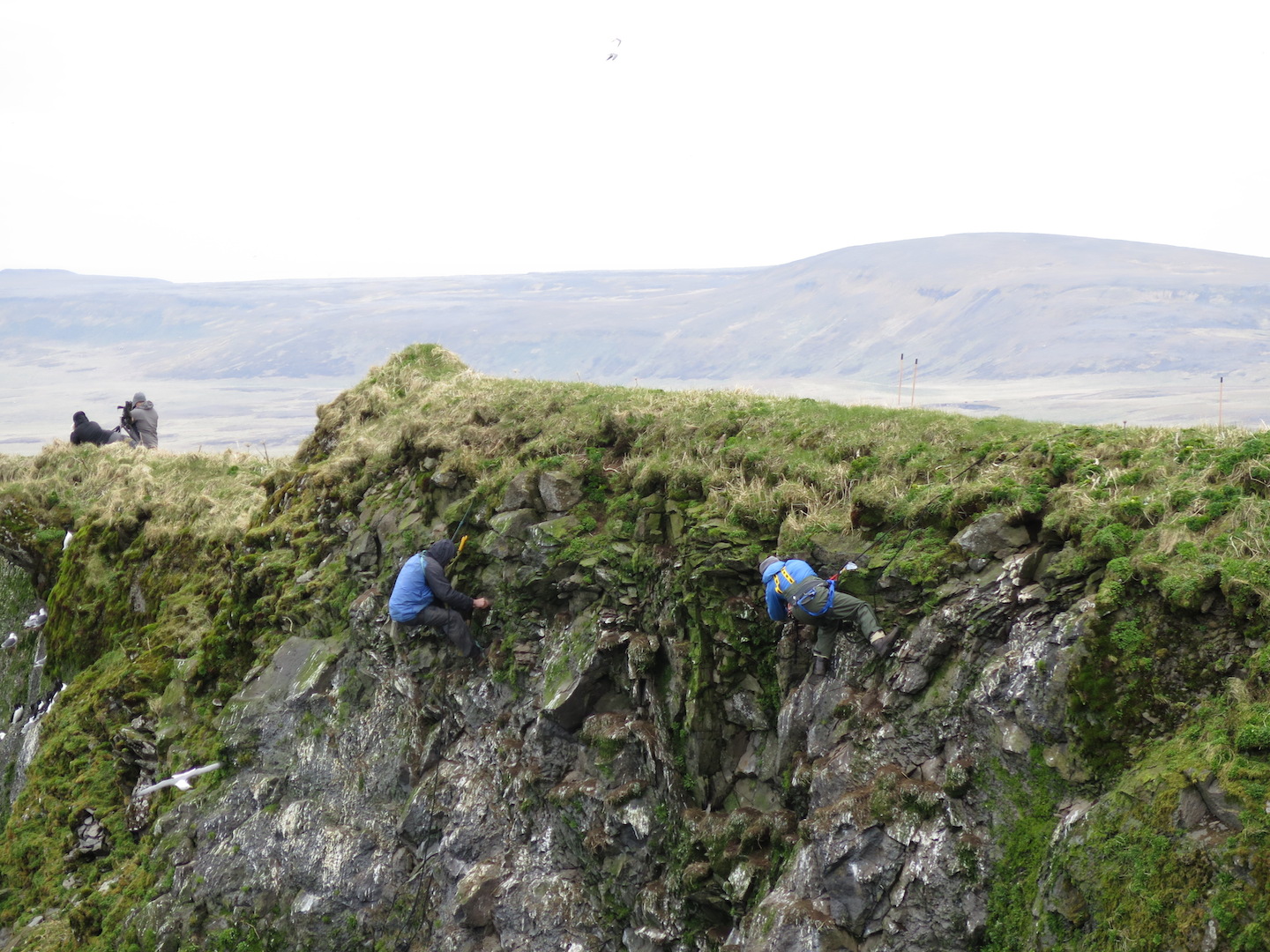Where do red-legged kittiwakes forage before they lay their eggs?
No one really knew the answer to this question until Rachael Orben and team deployed GPS dataloggers on them last May (2015) on St. George Island. Red-legged kittiwakes usually lay their eggs in early June, but start attending the colony and building nests much earlier than that. The period of time spent at the colony before eggs are laid is called “pre-lay”.
The map below shows the tracks that were downloaded from the 10 GPS loggers deployed on 10 birds.
Impressive!

The period of time before laying an egg is critical for females to gain the energy or body condition they needs to lay an egg.
It is also a very social time of year.
There is a lot of fighting for nest sites! Red-legged kittiwakes might seem small and cute and squeaky, but they are actually very aggressive when it comes to guarding their nest site! In 2015, red-legged kittiwakes had very low laying success. In fact 52% of the nests that were built never had an egg laid in them. On average this number is usually 31% (Alaska Maritime National Wildlife Refuge data).
We are hoping that the red-legged kittiwakes will have a better year in 2016.
How do you think these foraging tracks might change in a better year?

May on St. George. The team collecting data on St. George last summer had clear skies and easy walking (vegetation hadn’t grown to full summer height) and sometimes the birds were attending their nests (though not if we went early in the morning).
Catching red-legged kittiwakes to attach GPS loggers is tricky, and not for anyone scared of heights!
The top photo shows the team setting foot snares to retrieve geolocation loggers and deploy GPS loggers on pre-breeding red-legged kittiwakes.
 Red-legged kittiwakes standing around on half built nests
Red-legged kittiwakes standing around on half built nests
Ocean First Education helped support this portion of the project.

